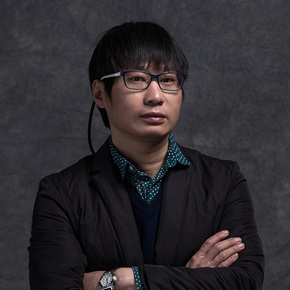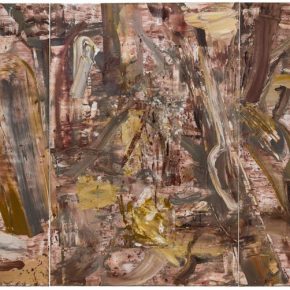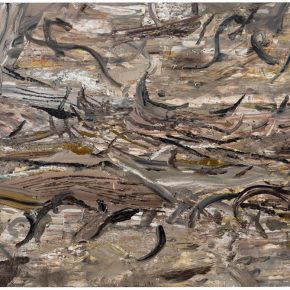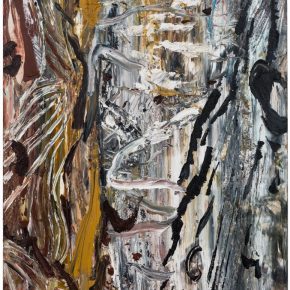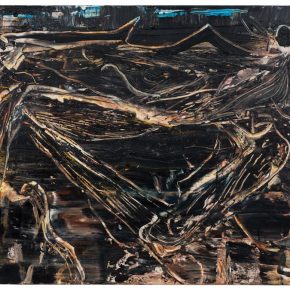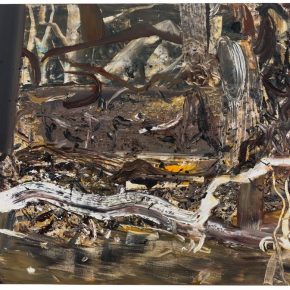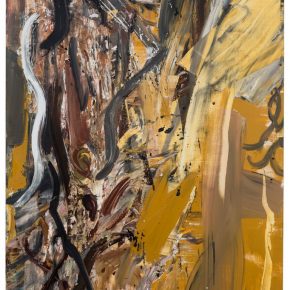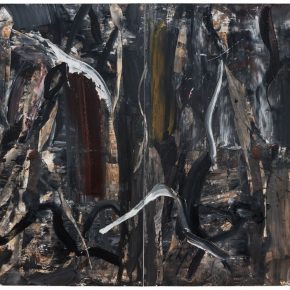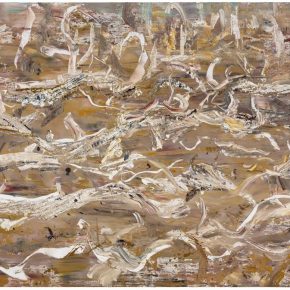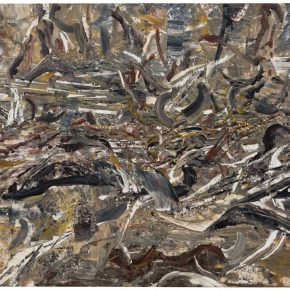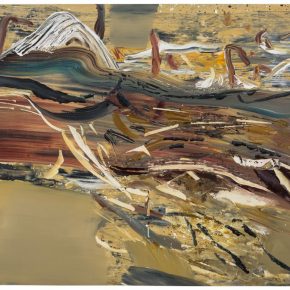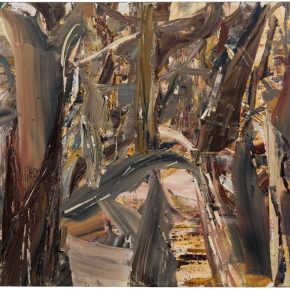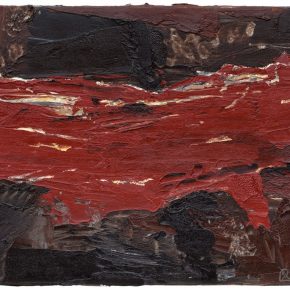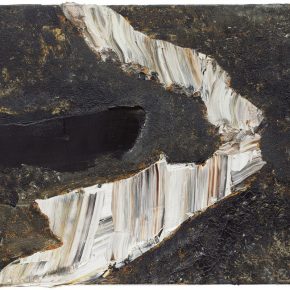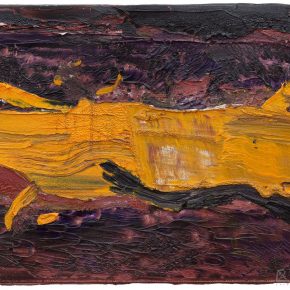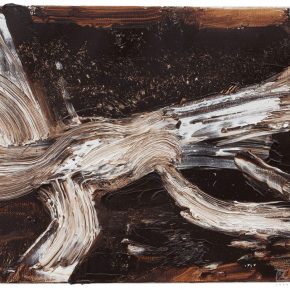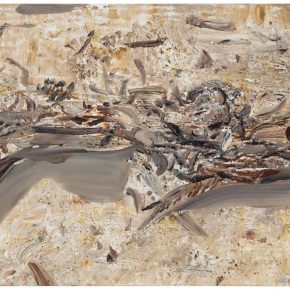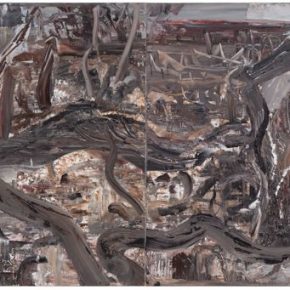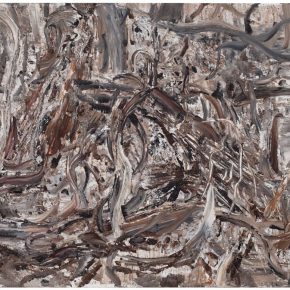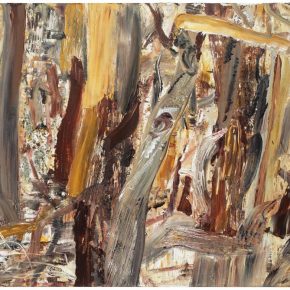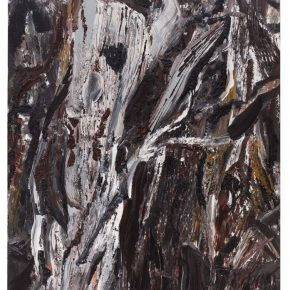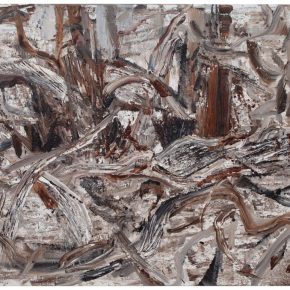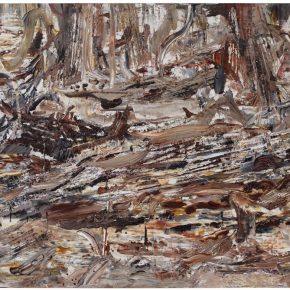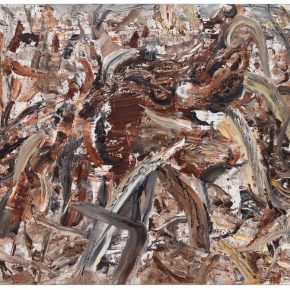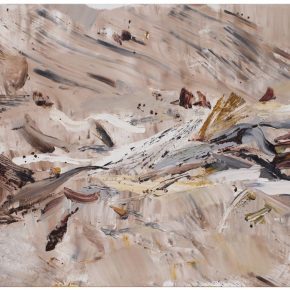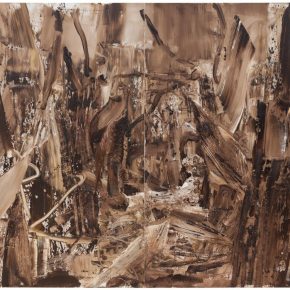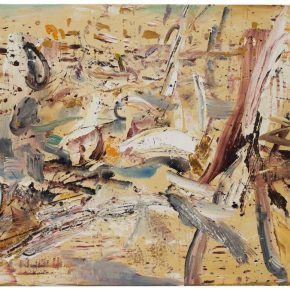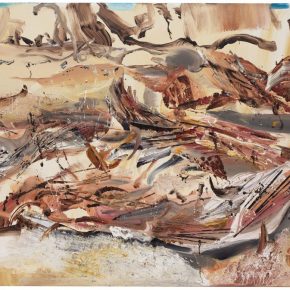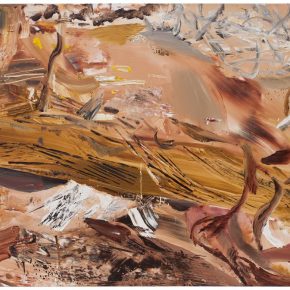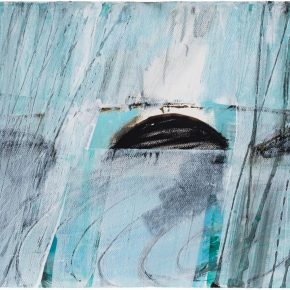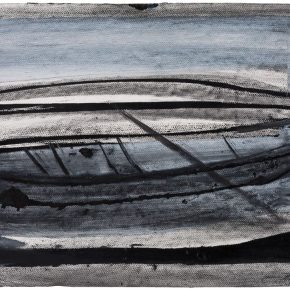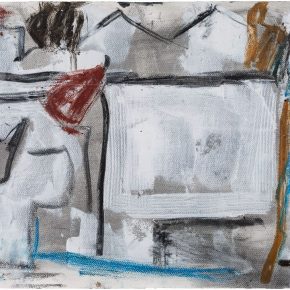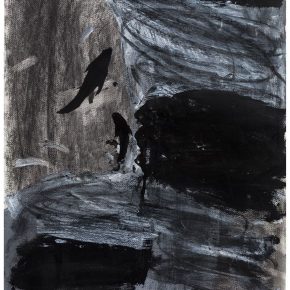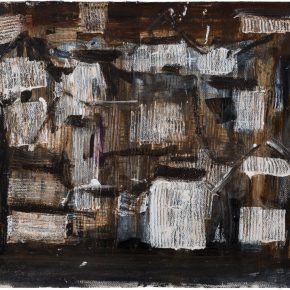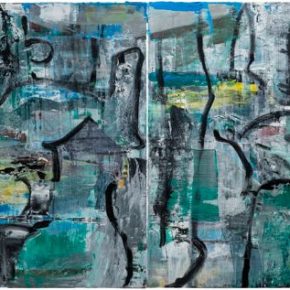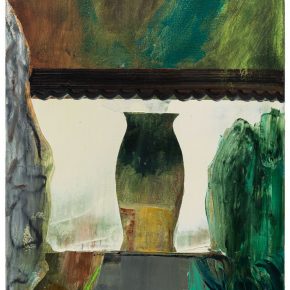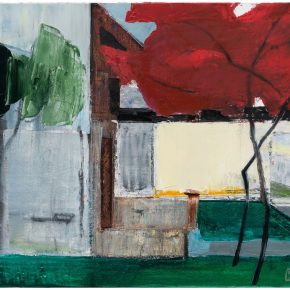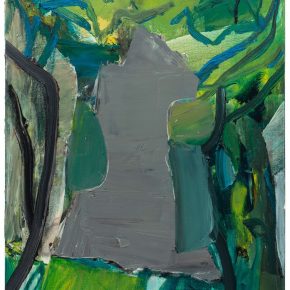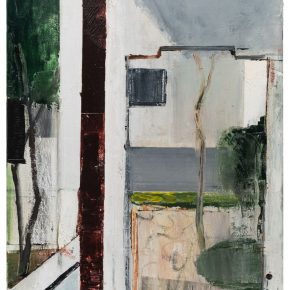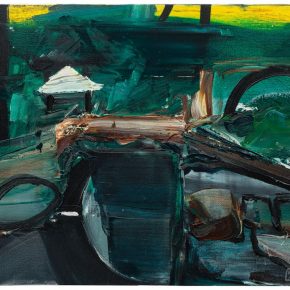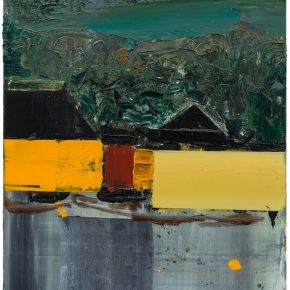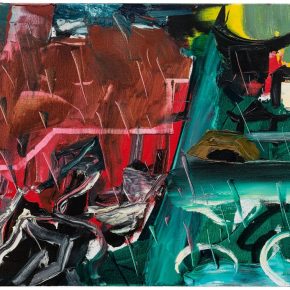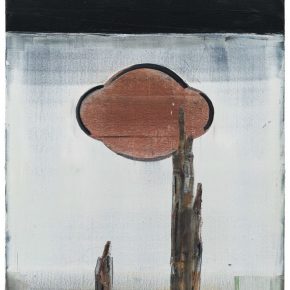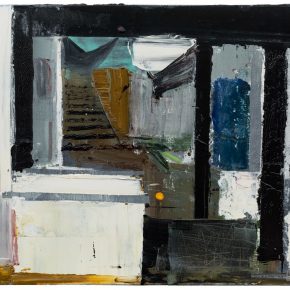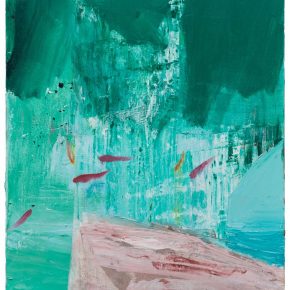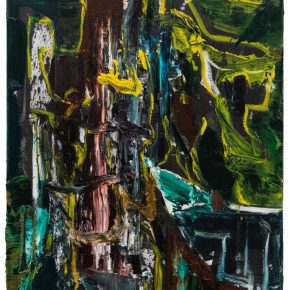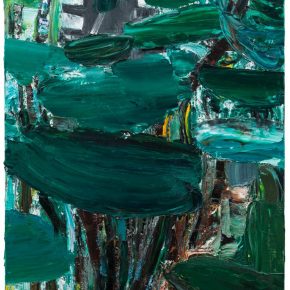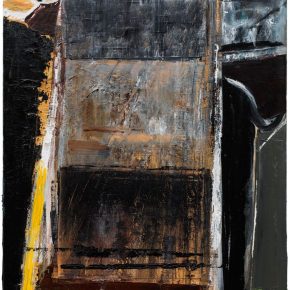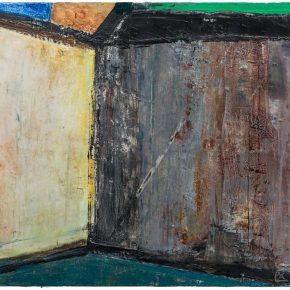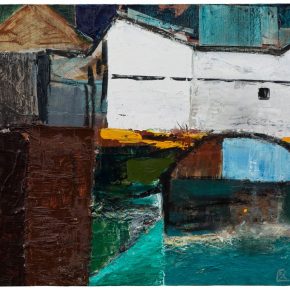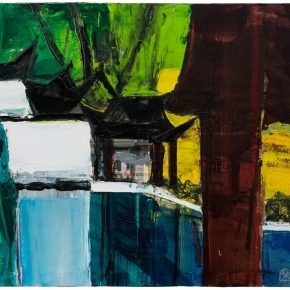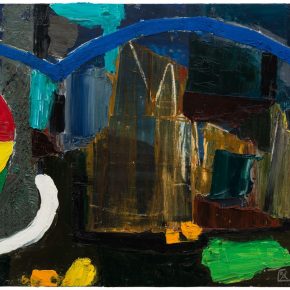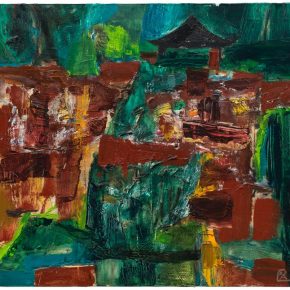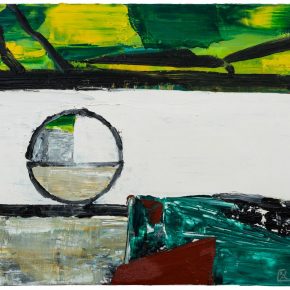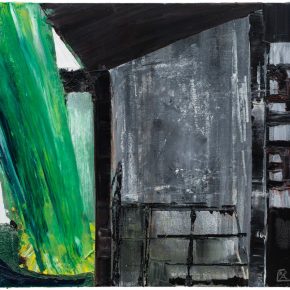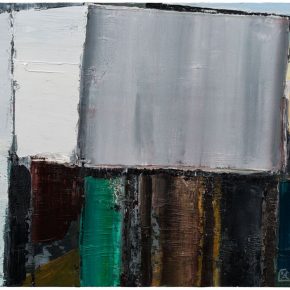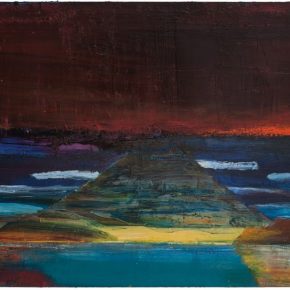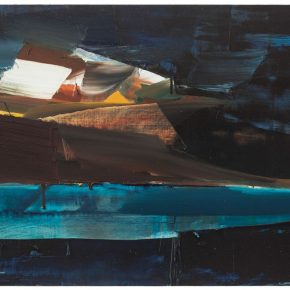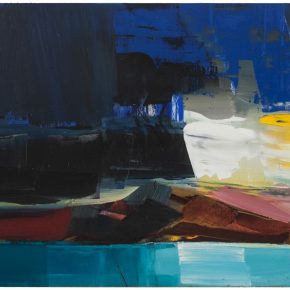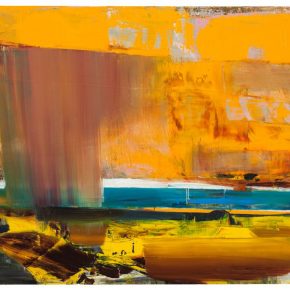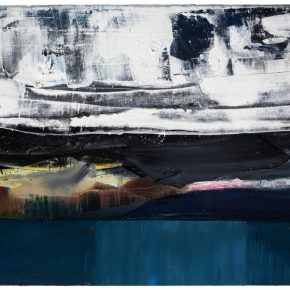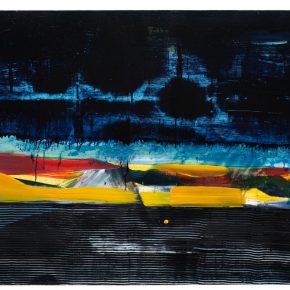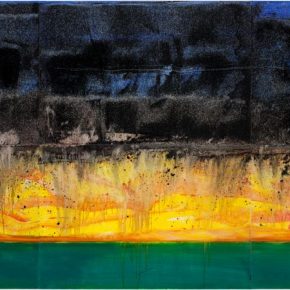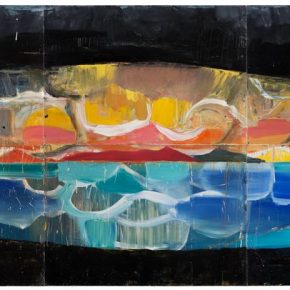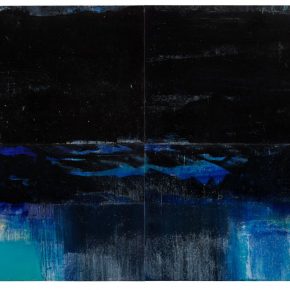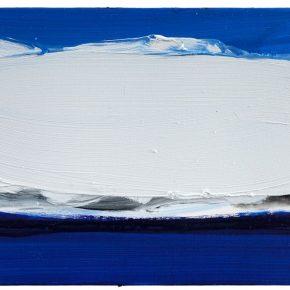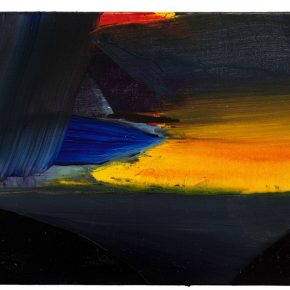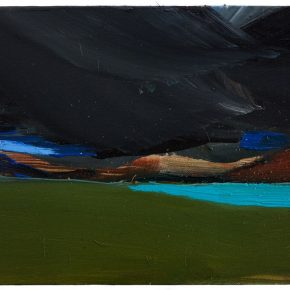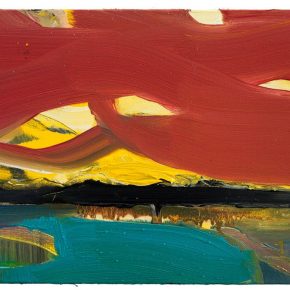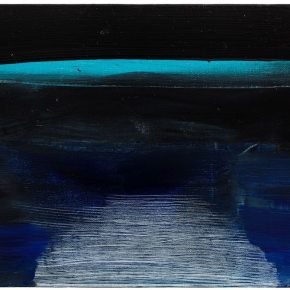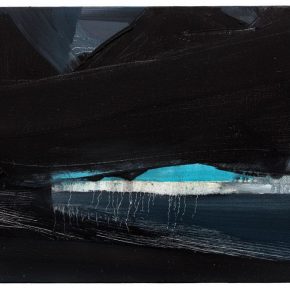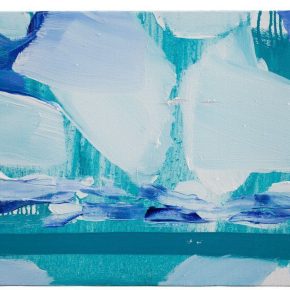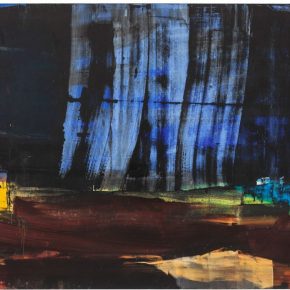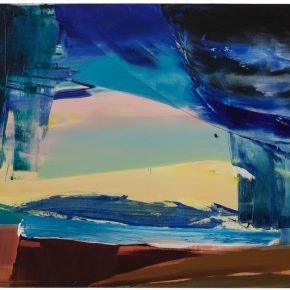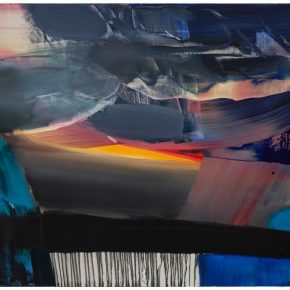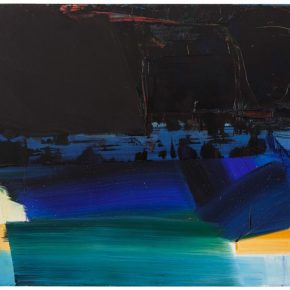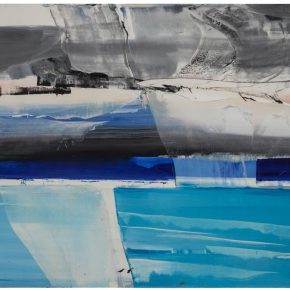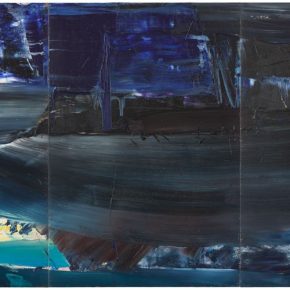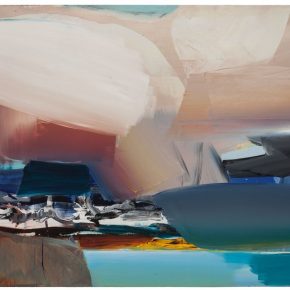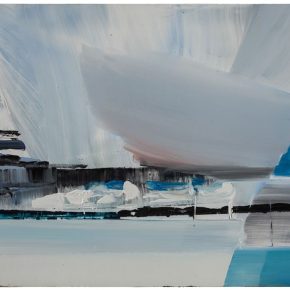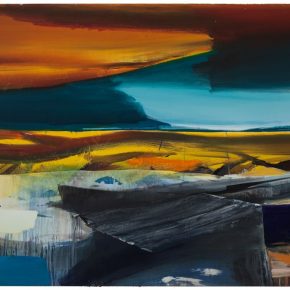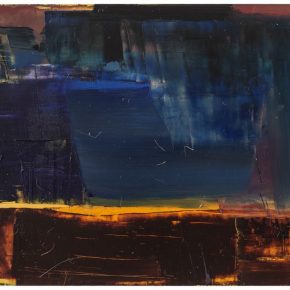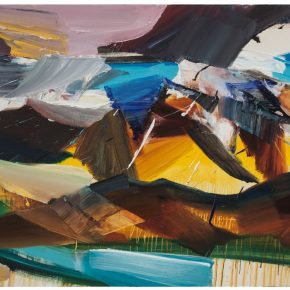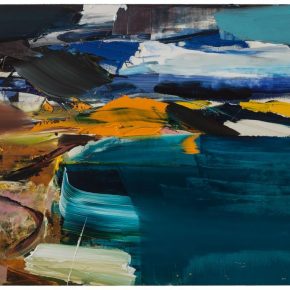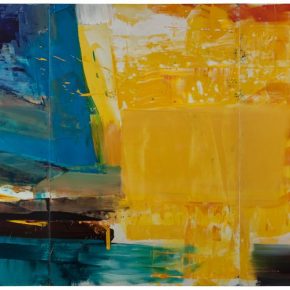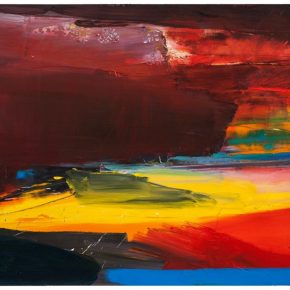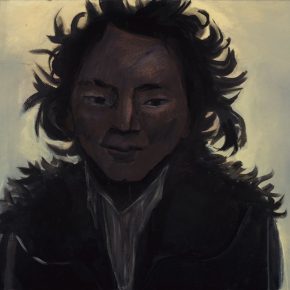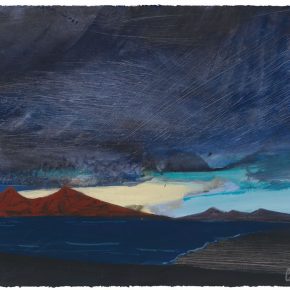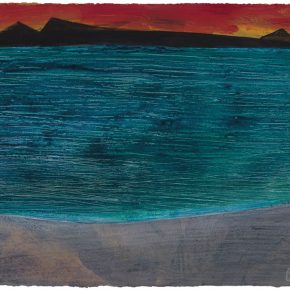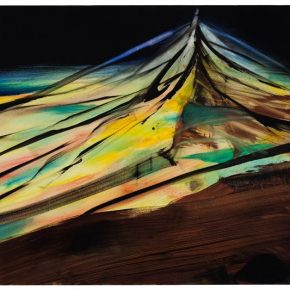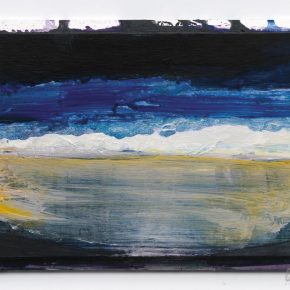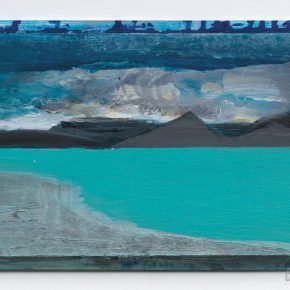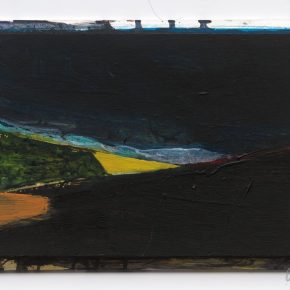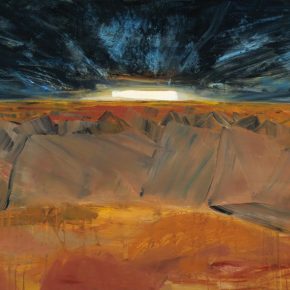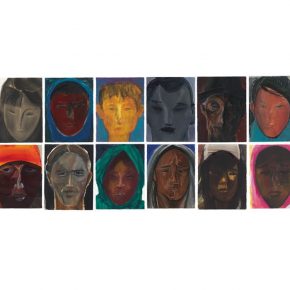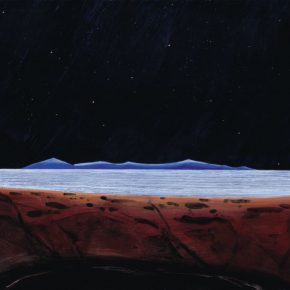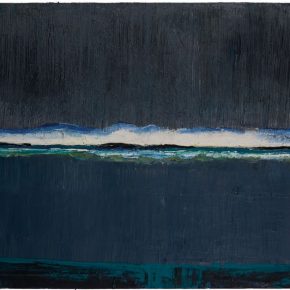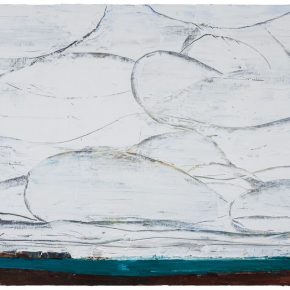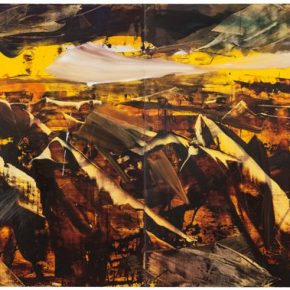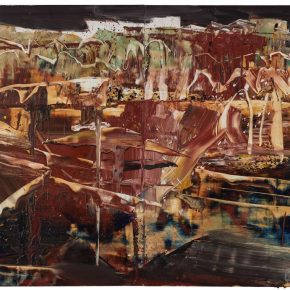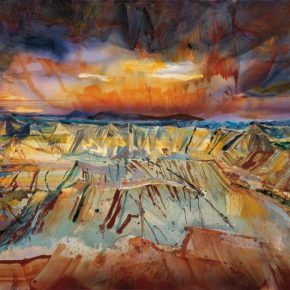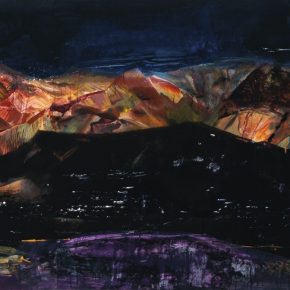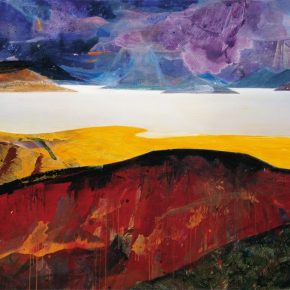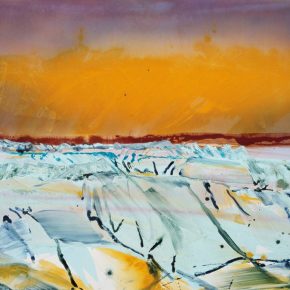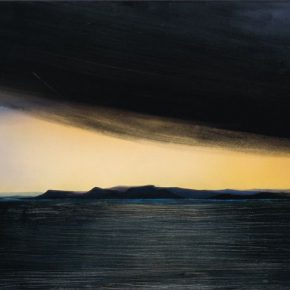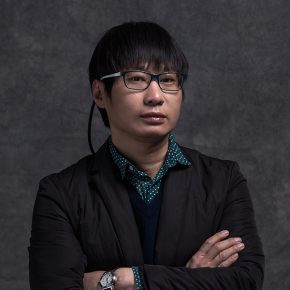Liu Shangying

Liu Shangying is an associate professor and Deputy Director of the Department of Oil Painting at the Central Academy of Fine Arts. Born in Kunming, Yunnan Province, China in 1974, Liu Shangying graduated from the High School Affiliated with the Central Academy of Fine Arts in 1995, and then graduated from the second studio of the Department of Oil Painting at the Central Academy of Fine Arts in 1999 with a Bachelor of Arts degree, and graduated from the third studio of the Department of Oil Painting at the Central Academy of Fine Arts with a Master of Arts degree in 2004. Since 2011, Liu Shangying has repeatedly visited Ali in Tibet and E’jina Desert in Inner Mongolia to sketch large-scale paintings, and has insisted on creating a series of works from each location, successively creating “Lake Manasarovar” series and “Populus Diversifolias” series. He is exploring the expression of painting in the primitive natural field and the relationship between painting and nature. Liu Shangying’s paintings are inseparable from his actions. He blends himself with primitive nature and uses the act of painting to converse with nature to form a multi-latitude experience and reflection. He had presented some solo exhibitions, including “Floating Clouds” held at the Beijing Inside-Out Art Museum in 2013, “Myriad Vision Rise from the World” held at the National Art Museum of China in 2015, and “Living Natures – Liu Shangying” held in the ruins of the red town in the E’jina Desert in Inner Mongolia in 2017.
“The realm of ‘emptiness’ pursued by Liu Shangying actually tells people to abandon a variety of known skills, schemas and experiences and to remove the reality of the landscape that they see, while he has to be at the scene, so that his painting method is first and foremost a paradox: the artist has to be at the scene, but he must be beyond the scene; while people must face the real scenery of a place, they must also give up the depiction of the reality of the landscape. Chinese contemporary art is facing a paradox: what kind of methodology should Chinese artists use to express their spiritual world after people have many historical artistic experiences, and people are conveniently receiving information on images as a resource. Liu Shangying is trying to explore a road that builds the relationship between the self and nature, experience and expression.”
– An excerpt from “Fan Di'an: Liu Shangying’s Art Journey in the Wilderness”
“These works show us the sacred place in Liu Shangying’s heart. His yearnings are reflected in these works with sparsely populated places, and most of them are of vast lands and huge lakes. He loves to paint lakes. The bright and calm lakes and the sky with dancing clouds make a strong contrast. The lake he painted is often the source of the dazzling light of the screen. Liu Shangying’s painting is his subjective performance rather than an objective reappearance. When he first encountered such a scene, he ‘felt the paleness and powerlessness of painting from nature’, and he moved huge canvases to the holy lake on the plateau after a year.”
– An excerpt from Xie Dongming’s article “Liu Shangying: In Pursuit of the Self”
“At that time, he stressed “simplicity” again and again. Sometimes he nodded and said ‘simplicity’ with hopes, and sometimes he shook his head and said “simplicity”, it seemed that he was angry and attempting to cut off something. Such a determination and such a pursuit are associated with color and shape, as well as the entire form of oil painting.”
– An excerpt from “Dai Shihe: Liu Shangying’s Paintings”
“I believe that, it is because Liu Shangying has faced such a real wilderness that he has acquired originality. But this originality is produced by the artist as helplessly struggles. In fact, seen from the perspective of the emergence and development of Chinese contemporary art over dozens of years, when artists can’t find a way to express their new feelings, they struggle and find a new way, and then a new art emerges.”
– An excerpt from “Sui Jianguo: Shock and Struggle”
“Liu Shangying prefers to paint in deserts, snowy mountains and highlands, such as the heart of Tibet and Inner Mongolia, where he can immerse himself into the wilderness and face the cruelty of nature. To me, it is not just painting from nature but putting his life to the test. As a matter of fact, painting from nature has become rare even among academic artists from the art school as advanced technology can provide high-quality photos that save them from the trouble of making a difficult trip. Even if they do travel on site to paint, they can just make draft sketches. Liu, however, believes that facing the wild and dangerous nature can arouse his passion for artistic creation. It may be what Freud called ‘eros’ or ‘life instinct’, the drive for survival, the release of full energy in facing death, and the use of creativity against the anxiety of living.”
– An excerpt from “Living Natures – Liu Shangying’s Action Painting”
“These paintings are abstract, but the expression is concrete. They are like the things that grow from the earth, and are reluctant to leave. They stubbornly stand on the earth, continuing to immerse themselves in the wind and sand, continuing to bathe in the sun, the moon and the stars. The paintings talk with heaven and earth, talk with nature. Perhaps they are thanking the power of nature, and perhaps exploring the direction of life.”
– An excerpt from “Wu Meng: How Is the Art Exhibition in the Desert Located Thousands of Miles Away?”
“The body becomes a painting, the spirit becomes a painting, nature becomes a painting, a field becomes a painting, and a painting becomes the body, spirit, nature and field. Liu Shangying uses the action of painting to completely integrate himself with nature, and the canvases are their projections. Every line, every color block, every gully, every blank space that it forms, are all the eternal slices of both cut by time. Therefore, it has transcended and eternalized the instantaneous continuum of the universe.”
– An excerpt from “Li Peng: The Nirvana and Reborn of Life in the Desert”
“Liu Shangying’s paintings and the open-air exhibition in real nature are seeking the ‘poetry of art’: it has created and experienced a new world in which nature has become art. Strangely, these works make us think of and understand perpetual nature, and then imagine such an art: this art itself should be the essence, model and cause of nature.”
– An excerpt from “Olivier Kaeppelin: Liu Shangying’s Living Natures”
“Each of his paintings is organized in layers of materials based on the structure of the landscape: the two horizontal belts seem to be the heaven and the earth, and a tortuous horizon that is like a Hercynian fold that appears between them. However, Liu Shangying is not a landscape painter in the classical sense, because of the definition that requires the artists’ works to be faithful to the reproduction of the natural scene. Liu Shangying does not paint a landscape, he paints within the landscape.”
– An excerpt from “Robert Pujade: Liu Shangying’s Painting Ascetic Practice”
“The residential houses and blue-and-white walls in his paintings are mixed with a lot of gray with a color tendency, in addition to the black and white. He used flat brushes to paint the large color blocks which build the structure of the screen, which seems to be too big to be limited to the screen. The contrast between the thick tone and colors of the details has created a strong rhythm. The colors that he recklessly painted and sprayed and the pulsating brushworks which inadvertently reveal his passion, build an ambiguous comprehensive form together with the fuzzy but symbolic images of the buildings. In this way, Liu Shangying excavated the historical traces of the city, and conveyed the complexity and weight of a city.”
– An excerpt from “Tang Yu: Another Face of Jiangnan – Liu Shangying’s Journey to Mount Yu”
“The dead wood and the sand squeezed in the wind, are like a lock that has sealed my connection with the invisible reality and the only key I have is painting, although I am not sure if it will help me or not. Obviously, painting does not speak for the sight itself in that field. Time is like a wizard, which can arbitrarily change everything. New life is hidden behind those lost, the reality of existence is perceived at a certain moment, or it is always invisible in the unpredictable eternity? I am tirelessly and madly involved in it, but I still do not have any answer.”
– An excerpt from “Liu Shangying: I see an endless beauty”
“This unique and independent outdoor field, the ‘man’ that occasionally appeared is not the most important viewer. The watching and reading of heaven and earth, sun and moon, and stars from night to dawn, raging and entanglements of the wind and sand, and the frost, together with the work constitutes the most important interactive relationships. Liu Shangying expressed his understanding of the ‘Living Natures’ through the paintings and exhibition, abandoning the exhibition space of traditional art museums to bring an exploration of nature, bearing the challenge of the works which may be destroyed at any time, devoutly offering his works to heaven and earth, to complete a real dialogue with nature. Seen from this perspective, regardless of the starting point and the extent of completion of the painting, the artist Liu Shangying is one of the representatives who is extremely pure and idealist.”
– An excerpt from “A Mysterious Road Leads to the Heart: Liu Shangying & His Endless ‘Living Natures’”
“Actually I don’t think my painting is more enduring or alive than nature. Here I can only say that these paintings are from my point of view and based on my own experience. It’s impossible to put in my works everything about the place, nor can I go beyond nature. But I do wish to go beyond myself, looking at myself and asking myself questions in nature through art. It is a very concrete and honest process, really fulfilling. The strength of art lies more on the spiritual level than being born from our long experience and fully charged emotions. More essentially, the muscle of art can reveal something about the future. In this sense, extraordinary art throughout history really goes further than nature, we admit, but nature is great for the fact that it is always there, never to be changed. It beckons artists one after another to devote to art, so nature goes further than art. Forming another perspective, nature and art do not differ because they both talk about the eternity of life. The life in nature is chaotic and primeval, while in art we find life that is created and given by external forces, both carrying mysteries and sacred characters that are hidden under some objective phenomenon.”
– An excerpt from “Growing in the Nature with Another Existing Way: Dialogue between Olivier Kaeppelin and Liu Shangying”
Courtesy of the artist, translated by Chen Peihua and edited by Sue/CAFA ART INFO


